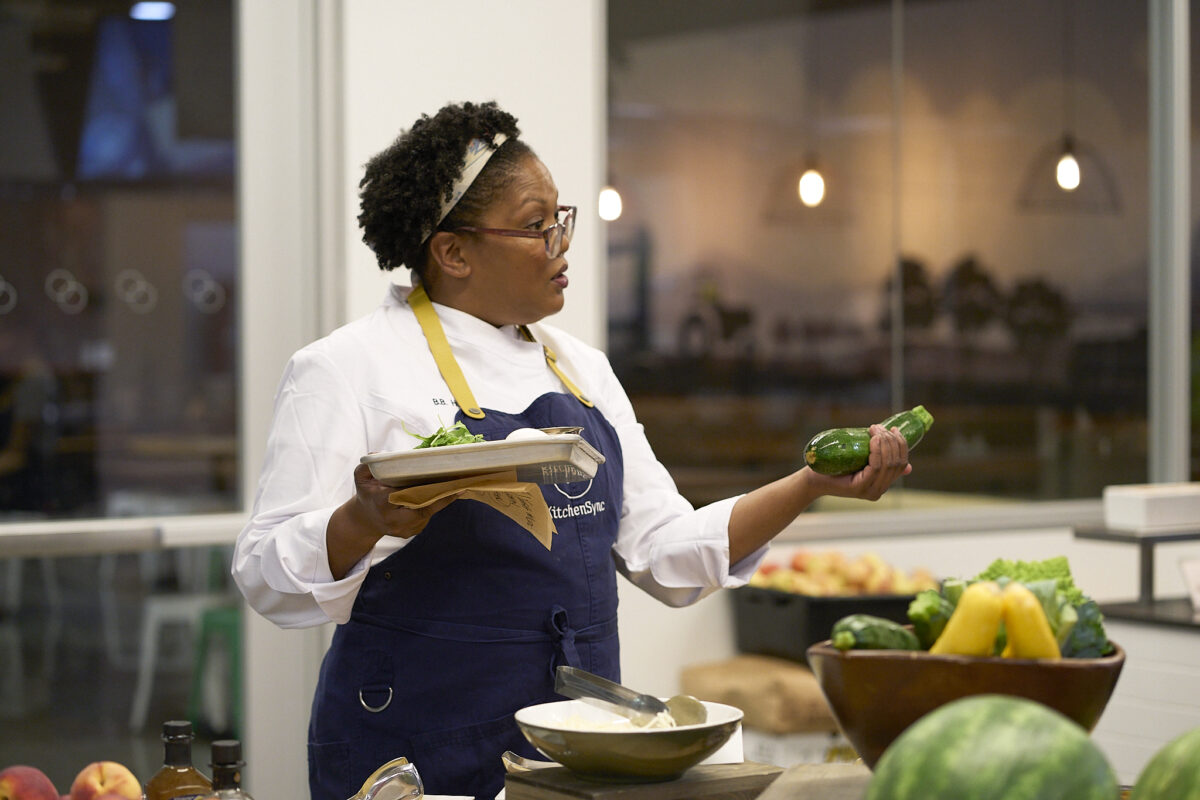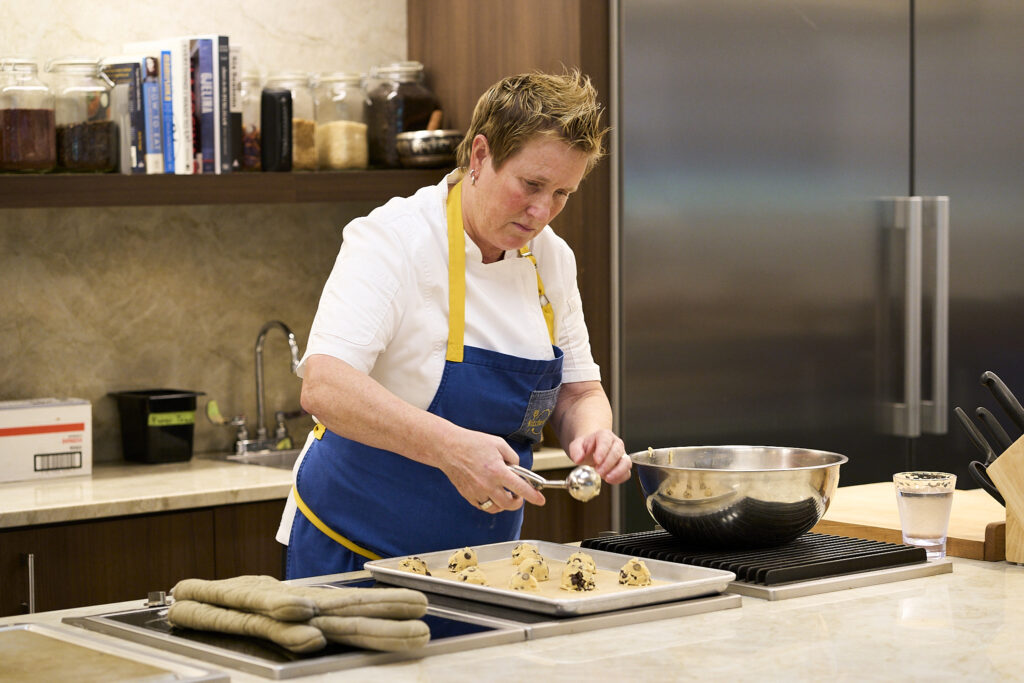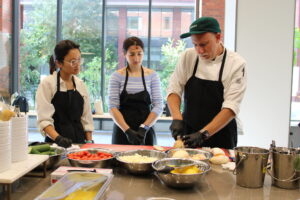Bravo Food Literacy Stories: A Pinch of Learning, a Dash of Fun
- by Ally Padrick

Teaching Kitchen Executive Chef B.B. Huff in action at a Silicon Valley tech company.
Food literacy is about knowing where your food comes from, but it’s also about empowering people with the skills and confidence to cook, explore, and engage with food in a meaningful way outside of our cafés. One way we do that is with our teaching kitchens.
These hands-on, chef-led experiences break down barriers, foster connection, and prove that food education doesn’t have to be intimidating. Instead, our guests have fun, interactive, and rewarding experiences. From robust programs with dedicated teams to grassroots word-of-mouth success, teaching kitchens are a piece of our customized overall approach to food service. But what does it take to operate one successfully?
Bringing Food Literacy to Life
A well-executed teaching kitchen event must engage guests in active learning, giving them practical skills they can use in their daily lives. Curriculums like making baked goods, mastering basic knife skills, or understanding the fundamentals of fermenting demystify cooking and make these principles accessible to all.

Snior Teaching Kitchen Executive Chef Dede Sampson teaches baking at a Silicon Valley tech company.
At a large technology company in Silicon Valley, teaching kitchens are an integral part of workplace culture, says Kitami Lentz, director of culinary development. With 15 dedicated teaching kitchens and teams offering up to 30 classes per week, they offer a range of events, from skill-building workshops that dive into the art of hand-rolled pasta to guest-led Food Talks featuring industry leaders such as Daniel Humm of Eleven Madison Park.
One Size Does Not Fit All
Each teaching kitchen operates differently based on space, audience, and company culture. But they share the common goal of making food literacy approachable. And while these featured accounts benefit from dedicated spaces, impactful events can happen anywhere — with a bit of creativity, existing cafés, kitchens, and event spaces can be transformed into hubs for culinary connection and learning.

Penn Quaker Kitchen Executive Chef Lucio Palazzo demonstrates basic knife skills to Penn medical students.
At Genentech, teaching kitchens have been part of the program’s DNA for nearly two decades. What started with small cooking demos has evolved into a well-loved program that covers everything from DIY dressings to arranging centerpieces with a local florist, growing primarily through word-of-mouth and monthly behind-the-scenes kitchen tours that generate excitement and curiosity.
And at Adobe, the program has undergone multiple iterations since its inception in 2017. Initially designed with the hope of creating a new revenue stream, it has since pivoted toward building connections among teams. Their “Teams in the Kitchen” initiative has evolved into a sought-after experience, with Bon Appétit delivering dozens of events each year across their multiple locations.
The University of Pennsylvania’s Quaker Kitchen is a demo space that doubles as a café, so they can offer weekly culinary sessions like a pickling lesson as well as a high-end, open-kitchen style dinner experience for up to 250 students four nights a week. Another unique facet of their programming includes a Culinary Medicine segment borne out of medical students’ desire to promote generalized health in addition to medicine. “This collaboration,” says Executive Chef Lucio Palazzo, “provides students with more confidence to explore the intersection of food and medicine.”
Providing Value for our Clients
For our clients — whether at major tech campuses or institutional settings — teaching kitchens are more than just an engaging perk for employees. They’re a strategic tool that strengthens workplace culture, enhances employee and student satisfaction, and reinforces our mutual commitment to sustainability and wellness.
This story ran in the Spring 2025 Food Literacy issue of Bravo, our company magazine. You can read more stories from the issue here.